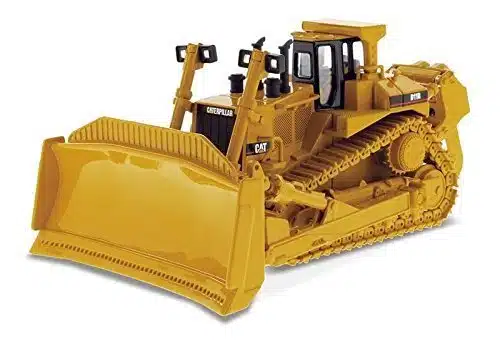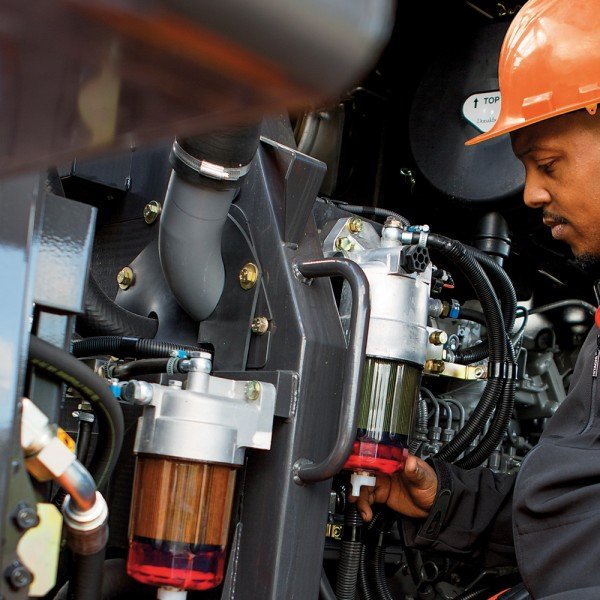
Caterpillar D11R Track-Type
D11R CAT Track-Type Tractor Service & Repair Manual (8ZR) – Complete Guide
Caterpillar D11R Service Repair Manual 9XR
Caterpillar D11R Service Repair Manual (9TR)
Introduction to the Caterpillar D11R Track-Type Tractor
The Caterpillar D11R Track-Type Tractor, specifically the 8ZR series, is a vital workhorse in industries like mining, heavy construction, and large-scale earth moving. This machine is built for extreme durability and high productivity, but like any powerful machine, it requires regular maintenance and service to perform at its peak. The D11R 8ZR Service & Repair Manual is an essential tool for anyone responsible for maintaining or repairing this impressive machine.
This guide provides a detailed breakdown of the key systems of the D11R 8ZR, as well as tips for troubleshooting, routine maintenance schedules, and advanced repair techniques.


Caterpillar D11R Track-Type Tractor Service Manual (8ZR) Major Components Overview
1. Engine
The Caterpillar 3508B Engine, which powers the D11R 8ZR series, is a turbocharged, after cooled, and direct-injection engine known for its high performance and fuel efficiency. It produces significant horsepower, making it ideal for large-scale operations.
Engine Features:
- Turbocharged with aftercooler
- Direct-injection fuel system
- 770 horsepower output
Key Maintenance:
- Regular oil and filter changes
- Injector calibration and replacement when necessary
- Coolant system flushes to prevent overheating
2. Powertrain and Transmission Caterpillar D11R
The powertrain is designed to maximize the tractor’s ability to perform in difficult conditions, offering a combination of strength and smooth operation. The power shift transmission provides seamless shifts, and the torque converter amplifies engine power, enabling the D11R to push through even the toughest terrains.
Powertrain Maintenance:
- Regular inspection of transmission oil levels
- Replacing transmission oil filters at scheduled intervals
- Inspection and service of the torque converter as needed
3. Undercarriage System
The undercarriage of the D11R 8ZR series is built for endurance. It comprises tracks, rollers, idlers, and sprockets designed to withstand extreme conditions while supporting the heavy weight of the machine.
Key Wear Points:
- Track shoes and pins
- Carrier rollers and idler wheels
- Sprockets
Maintenance Tips:
- Adjust track tension regularly
- Lubricate moving parts to prevent excessive wear
- Inspect for cracks or excessive wear in track components
4. Hydraulics
The hydraulic system controls the blade and ripper, allowing the operator to manipulate massive amounts of material with precision. Maintaining this system is crucial for keeping the machine in optimal working order.
Hydraulic Components:
- Pumps and valves for blade and ripper control
- Hydraulic lines, cylinders, and fittings
Service Tips:
- Inspect hydraulic fluid levels daily and ensure there are no contaminants
- Replace worn hydraulic hoses and check for any leaks
- Regularly monitor and maintain the hydraulic cylinders to ensure smooth blade and ripper movements
Routine Maintenance Procedures
Proper maintenance of the D11R 8ZR is vital for ensuring long-term performance and minimizing downtime. Following a strict maintenance schedule will help prevent costly repairs and ensure the machine operates at its best.
Daily Maintenance Checklist
- Engine Oil: Check the oil dipstick and refill as necessary.
- Hydraulic Fluid: Inspect the hydraulic fluid levels and check for leaks.
- Undercarriage: Inspect the tracks and rollers for any signs of wear or damage.
Weekly Maintenance Tasks
- Transmission Fluid: Check the fluid levels and inspect for any leaks or signs of contamination.
- Cooling System: Inspect radiator fins for clogging and ensure the coolant is at the proper level.
- Air Filters: Clean or replace air filters to prevent dust and debris from entering the engine.
Monthly Maintenance
- Hydraulic System: Drain and refill hydraulic fluid if contaminated, and inspect hydraulic lines and cylinders for wear or leaks.
- Transmission Service: Inspect the transmission for fluid leaks and ensure smooth shifting.
- Engine Diagnostic Check: Use diagnostic tools to check for any engine error codes or sensor malfunctions.
Advanced Repair Techniques for the Caterpillar D11R
1. Engine Overhaul
In the event of major engine failure or decreased performance, a full engine overhaul may be required. This process involves disassembling the engine, inspecting all internal components, and replacing any parts that show wear or damage.
Steps for Engine Overhaul:
- Drain the engine fluids and disconnect the electrical systems.
- Disassemble the engine block, inspecting key components like pistons, crankshaft, and camshaft.
- Replace any damaged or worn-out parts, including gaskets, bearings, and seals.
- Reassemble the engine and perform thorough post-overhaul diagnostics to ensure proper operation.
2. Transmission Repair
Transmission issues can result in gear slippage, slow shifting, or power loss. If you encounter these problems, it is essential to inspect and repair the transmission as soon as possible.
Repair Process:
- Drain the transmission fluid and remove the transmission casing.
- Inspect the gears, shafts, and bearings for wear or damage.
- Replace any faulty components, clean the interior, and reassemble the transmission.
- Refill with fresh transmission fluid and test for smooth gear operation.
3. Hydraulic System Repair
Hydraulic leaks or a loss of hydraulic power can cause the blade or ripper to become unresponsive. Quickly identifying and repairing leaks in the hydraulic system will help prevent further damage.
Repair Steps:
- Inspect all hydraulic lines, fittings, and cylinders for signs of leakage or wear.
- Replace any damaged or worn hydraulic hoses.
- Refill the hydraulic reservoir and bleed the system to remove any air pockets.
- Test the hydraulic system to ensure proper function.
Troubleshooting Common Issues with the D11R 8ZR
Overheating
Overheating is a common issue in large machinery like the D11R 8ZR, often caused by insufficient cooling or coolant leaks.
Possible Causes:
- Clogged Radiators: Clean the radiator fins regularly to allow for proper airflow.
- Coolant Leaks: Inspect coolant lines and replace any damaged hoses or fittings.
- Faulty Water Pump: Replace the water pump if it’s no longer circulating coolant effectively.
Hydraulic Power Loss
If the blade or ripper isn’t moving smoothly or is slow to respond, it could indicate a problem with the hydraulic system.
Common Causes:
- Low Hydraulic Fluid: Check and refill hydraulic fluid if necessary.
- Worn Hydraulic Pump: Replace the pump if it’s no longer providing adequate pressure.
- Leaking Cylinders: Replace seals in the hydraulic cylinders if they’re worn or damaged.
